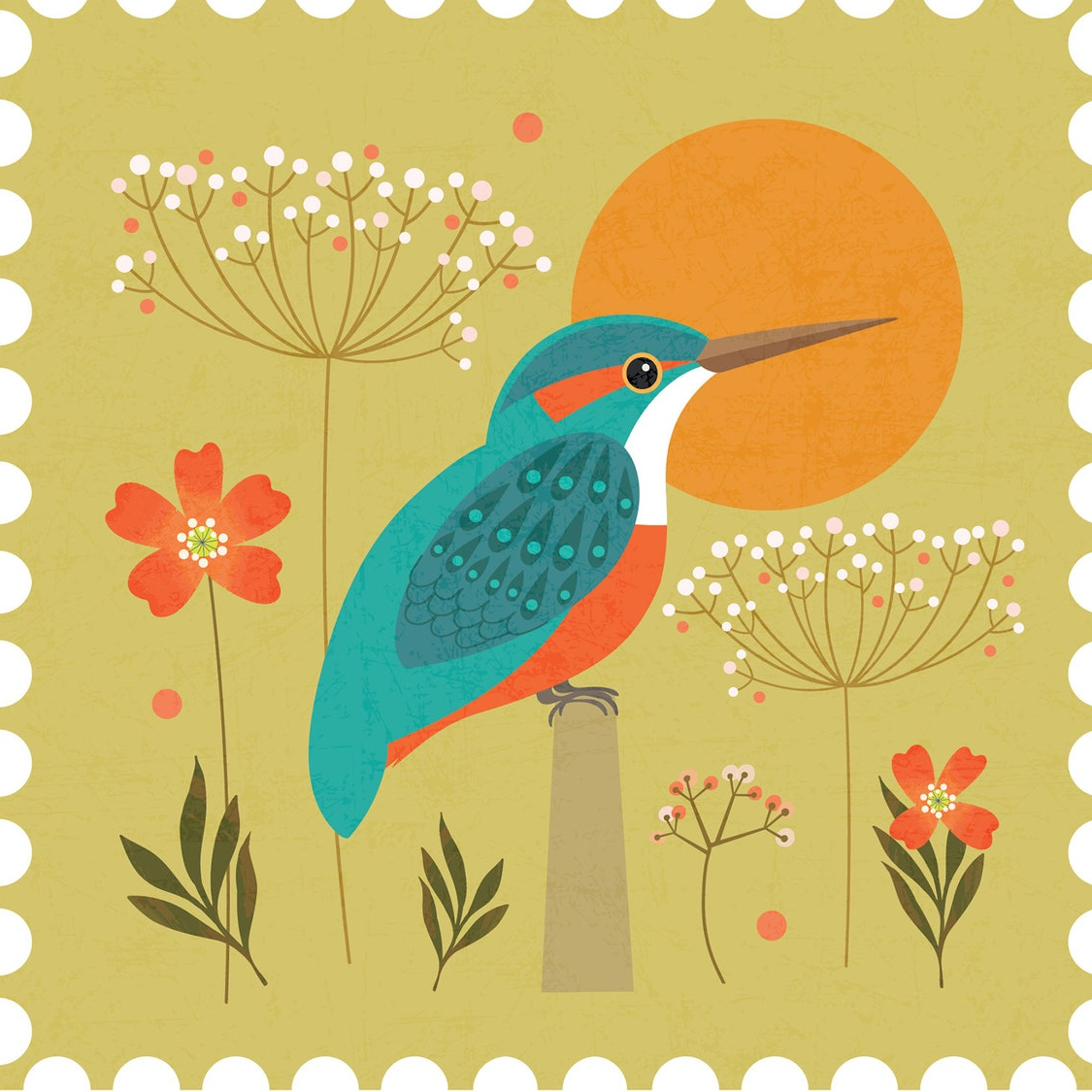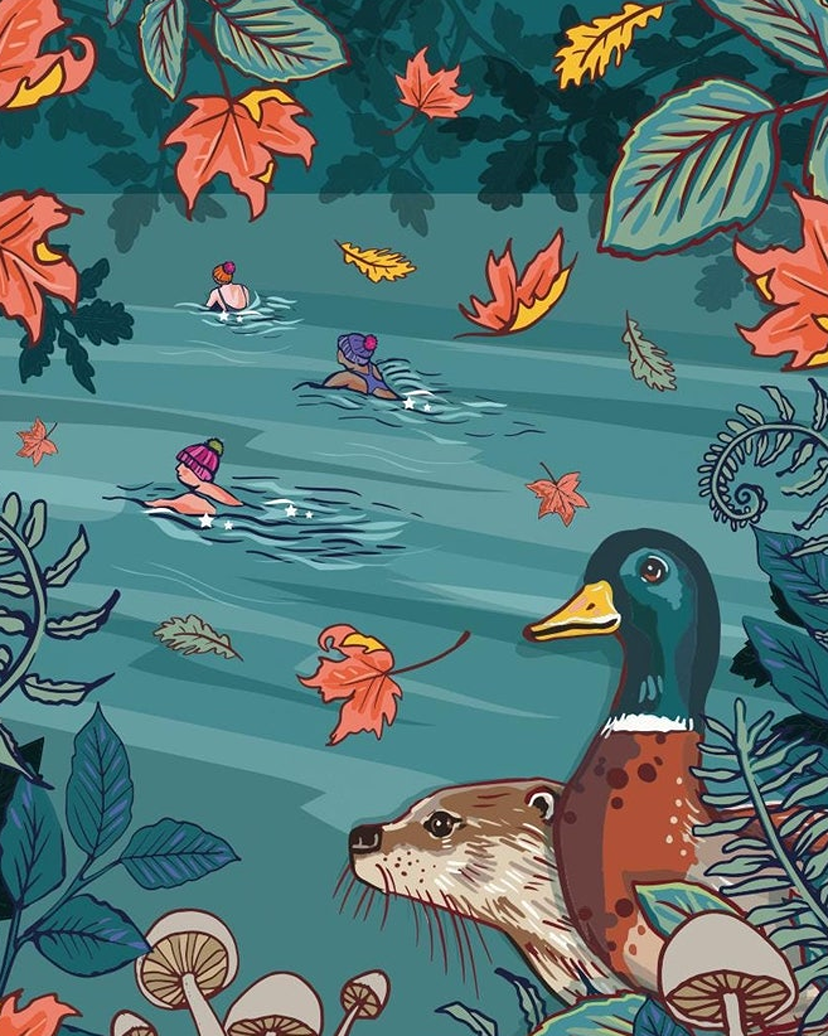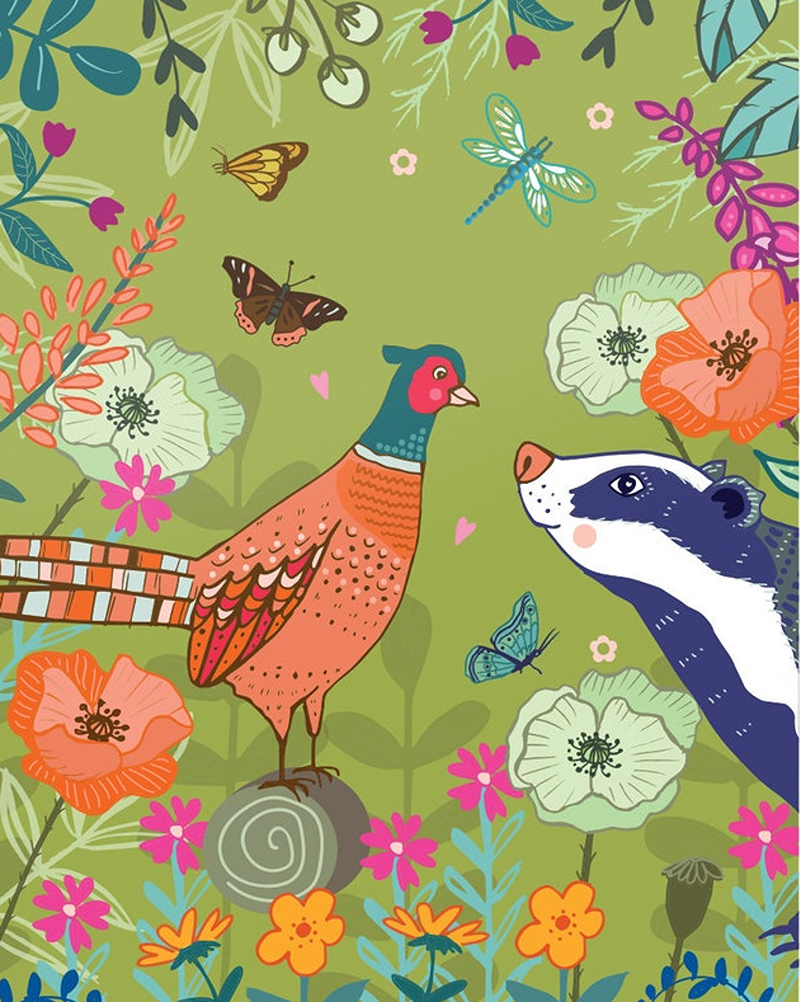The Many Positive Benefits of Rewilding

Wilding is a beautifully illustrated guide to rewilding, covering the story of one of England’s most successful project in West Sussex. This previously barren estate is now home to many happy birds – nightingales, peregrine falcons, turtle doves, ravens, red kites, lesser-spotted woodpeckers, skylarks, house sparrows, yellow hammers and sparrowhawks.
Restoring the wetlands of the floodplains by the River Adur has also created habitats for wading birds, amphibians, dragonflies, England’s largest population of purple emperor butterflies, all five species of native owls, most species of bats, rare beetles, visiting hoopoe birds and black storks (one of Europe’s rarest birds).
And even ‘heathland nightjars’ and ‘woodland nightingales’ that would normally live elsewhere, suggesting they are now ‘clinging to any natural habitat’ they can find.
Knepp Estate covers over 3500 acres near Horsham, once used for intensive farming. The owners decided to undertake a unique experiment, simply letting the land be, and leaving nature to itself.
Today, free-roaming herds of English longhorn cattle, Exmoor ponies, Tamworth pigs, and red and fallow deer roam the land. They graze, root and trample, turning up ground which allows wild plants to seed. This mimics natural grazing patterns that once shaped England’s countryside.
A Couple Rewilds a Lincolnshire Farm

A Wilding Year tells the personal story of artist Hannah Dale and her husband, whose used a sad inheritance of his father’s death, to restore the farm given to them over to wildlife, as the land was not fertile to grow food.
Jack’s dad was a regenerative farmer. And after he read about the rewilding project in Sussex, he decided that rewilding their patch of land would be a fitting tribute to his father (who had even invented a seed drill that did not disturb his beloved earthworms).
So they began to plant trees, create wildlife ponds and scatter wildflower seeds, to create natural homes for the creatures that now live in their blossoming hedgerows that burst with berries each autumn.
Grasses ‘fizz with insects’, and over 1000 meadow brown butterflies fly over creeping thistles. Birds sing and owls hunt, goldfinches to chatter to each other, and badgers snuffle for worms.
The rewilding project saw these marshy wetlands herald the return of skylarks, meadow pipits, hobbies and polecats to their farm. Which also provided new inspiration for Hannah’s wildlife paintings.
How Natural World Fund is Rewilding England
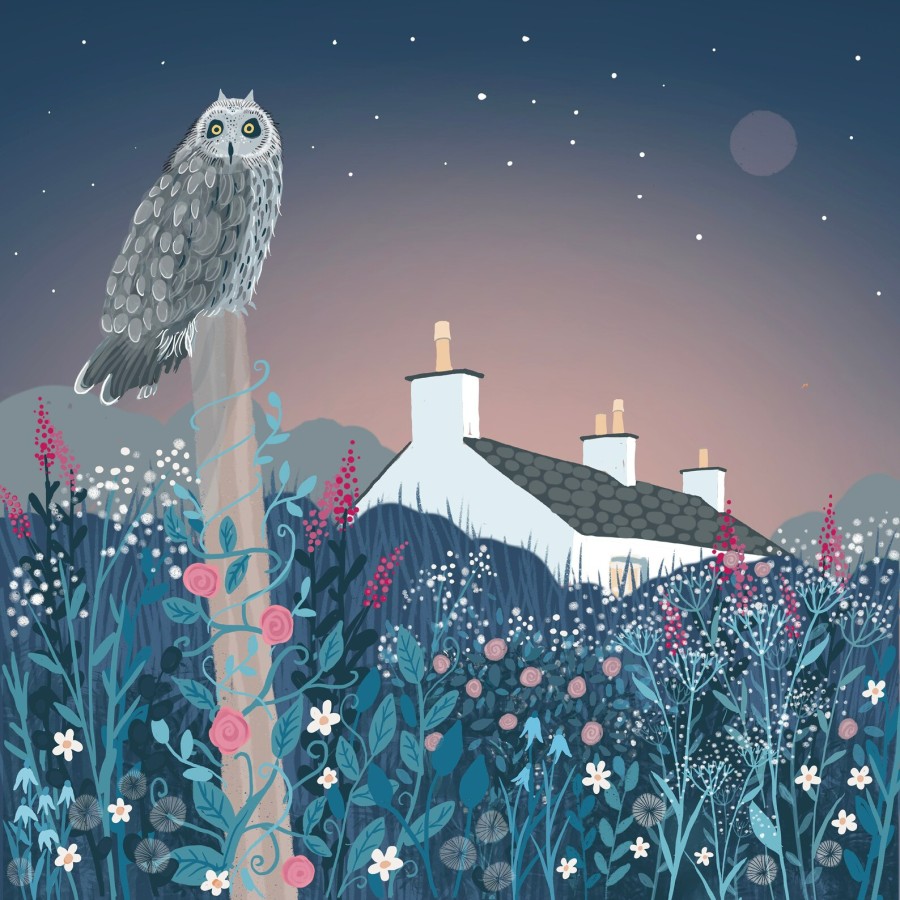
Natural World Fund is an amazing organisation that has big plans to rewild large parts of England, by pooling donations for ‘community rewilding projects’ to buy and restore degraded land to its natural state, to create habitats for native wildlife. Methods include planting woodlands and wild meadows, and restoring wetlands (which also protects fish populations).
Pending possible sites to restore include:
A 70-acre plot in Yorkshire (with degraded soil and few trees, hedges or wildflowers) due to intensive farming has plans to restore a natural woodland and wetland paradise, with quality soil. Derelict buildings could be restored to educate, powered by water energy.
Goit Stock Wood (also in Yorkshire) lies in rolling countryside by a popular waterfall, and the charity aims to buy the ancient woodlands so nobody can buy them. It also has plans to install sustainable flood management techniques like leaky dams and natural overspill areas.
A 4-acre site (a former reservoir in York) is overgrown with trees, shrubs and grassland, yet still an important site for local nature. Thankfully a bid to build houses here was refused (due to letters from local residents) but there are sure to be more bids.
So again Natural World Fund wants to buy this plot to protect it from development, to protect local wildlife (foxes, hedgehogs, tawny owls, woodpeckers, waxwings, sparrowhawks and voles).
Natural History Museums reports that England now ranks in the bottom 7 of countries for biodiversity (Costa Rica paradoxically has the most biodiversity, due to stringent laws to protect wildlife).
The main reason we are losing wildlife is due to lack of habitat (we have lost nearly all our forests, wetlands and wild meadows).
Actor Mackenzie Crook (who played dorky ‘Gareth’ in TV comedy The Office) is a passionate environmentalist. A few years ago (when he could have used money from a project to buy a Ferrari), he instead bought an 8-acre woodland in Essex, so nobody could build on it!
Creating Wildflower Meadows
Traditional wildflower meadows once filled the English countryside. Today, most have been lost. The Fund works with landowners to sow wildflower seeds and let grasslands recover. These meadows become colourful homes for bees, butterflies and birds. They also improve soil health and help prevent flooding.
Bringing Back Lost Species
Some iconic animals have disappeared from England’s wild spaces. Natural World Fund helps reintroduce species like red kites, water voles and beavers. These animals play important roles in their habitats.
Beavers build dams that slow streams and create wetlands for other wildlife. Red kites keep nature in balance, by cleaning up carrion.
Supporting Local Communities
Rewilding works best when local people are involved. Natural World Fund connects with farmers, schools and community groups. They offer training, advice and small grants to help other rewilding projects.
Restoring Wetlands and Rivers
Wetlands filter water, store carbon and support rare creatures. Many have been drained or damaged. The Fund backs projects to restore ponds, marshes and riverbanks.
Cleaner water returns, rare birds and insects thrive, and people enjoy nature walks along these revived spaces.
Promoting Sustainable Farming
Natural World Fund works with farmers to find ways of managing land that help wildlife and people. Planting trees in fields, leaving wild margins and using fewer chemicals can all help. This approach means farms stay productive, while still making space for skylarks, hedgehogs and wildflowers.
Rewilding is At Risk from Government Plans

One great example of successful rewilding has been reintroducing beavers (once almost hunted to extinction) to rivers, where their love for building dams is helping to prevent floods.
However, the recent relaxing of planning laws to build housing, is causing huge concern with conservationists. You can build affordable housing on brownfield (waste land), not on land that is home to native wildlife. The Critic has a article on the ‘false argument on rewilding vs affordable housing’. The answer is that you can have both.
The other issue is that in England, most land is owned by just a few people. Conservationists for example, are asking Prince William to give over a larger percentage of Dartmoor (most of which he owns) rather than the ‘small potatoes’ already donated, for rewilding projects.
Rewilding Your Own Patch of Land

Renaturing is a lovely and unique book. Although rewilding is wonderful, most of us don’t have a sprawling estate to do this! So this book looks at how to do ‘renaturing’, to make tiny changes in your own garden, to restore habitats for birds and native wildlife.
Use no-dig gardening (and avoid netting) to help wildlife (and ensure ponds have sloping sides). Also read our posts on pet-friendly gardens and wildlife-friendly gardens. Also read our post on how to stop birds flying into windows.
20 years ago, the author moved from London to the English countryside. Behind his farm labourer’s cottage was a small field with a ‘for sale’ sign. At first a site for family picnics and cricket matches, he knew that the 2-acre patch held potential for nature to flourish.
This is the inspiring story of how over a number of years, James undertook a project to simply ‘rewild the field’. He built a wildlife-friendly pond, forged meadowlands and created habitats for birds and insects (and encouraged pollinators and wildlife, by encouraging flowers and plants). And soon what was once a grassy space, was again buzzing with life.
In this book, James makes the case that you can become a ‘rewilder’, even with a mini-habitat like plant pots in a tiny garden. James Canton is Director of Wild Writing at University of Essex.
Let Part of Your Lawn Grow Wild
Cutting the grass less often lets wildflowers pop up, which feed insects and pollinators. Try leaving a section of your lawn un-mowed through spring and summer. Even a small area left to grow can help local wildlife. Read our post on organic lawns.
Swap Exotic Plants for Native Species
Local plants support local wildlife better than foreign ones. Choose wildflowers, shrubs, and trees that grow in your area. They offer food and shelter for birds, insects, and even tiny mammals.
You’ll notice less effort needed as native plants are better suited to your soil and weather.
Add Log Piles and Stone Stacks
Logs and rocks create perfect hideouts for bugs and small animals. Place a pile of sticks or logs in a shady corner, or stack stones in a sunny spot.
Over time, these piles become homes for beetles, worms, frogs, and slow worms. Watching them brings a new charm to your garden.
Make a Small Pond or Water Feature
Water draws in frogs, newts, birds, and insects. Ensure they have sloping sides, for easy entry and exit for wildlife. And place a few large stones in shallow ponds or bowls, to create safe landing spaces for bees and butterflies. Avoid tap water with chemicals – a child/pet-friendly water butt that recycles rainwater is best.
Create Wildflower Patches or Meadows
Wildflower patches add bright colour and attract bees, butterflies, and moths. Clear a piece of grass, then scatter a mix of native seeds.
Wildflower meadows need poor soil, so don’t add compost (this would encourage grass instead to compete). Cut back once a year in late summer to keep them growing well.
Leave Leaf Litter and Deadwood
Don’t clear all dead leaves in autumn. A layer of fallen leaves is shelter for hedgehogs, frogs, insects, and worms. Dead branches left lying enrich your soil as they rot and provide insects with nesting spots.
It’s a simple way to support many types of wildlife.
Hedge Instead of Fence
If possible, swap a plain wooden fence for a living hedge, using native shrubs like hawthorn or hazel. Hedges give birds safe nesting places and act as corridors, letting animals travel safely from garden to garden. Plant your hedge in autumn or early spring for the best results.
If you have to use wooden fences, read our post on how to help endangered hedgehogs (includes tips on ‘hedgehog highways’ that let our spiky friends move safely from garden to garden at night).
Ditch Chemicals and Fertilisers
Pesticides and weedkillers can harm bees, butterflies, and birds. Avoid using them (securely bin, ask your council the best disposal method).
Let nature handle unwelcome visits (ladybirds will eat up aphids for you, and many birds and wildlife will control other creatures. Also read our post on kind slug and snail deterrence).
Create Safe Havens for Garden Birds
Read our post on creating safe havens for garden birds. This includes:
- If you live with cats, keep them indoors at dusk and dawn, when garden birds are likely feeding.
- Never give garden birds stale or mouldy bread (not buttered bread, as fat can smear on feathers, affecting weatherproofing and insulation).
- Never use brightly-coloured or tin bird houses, as they can overheat and attract predators.
A Book of Rewilding Stories for Bedtime
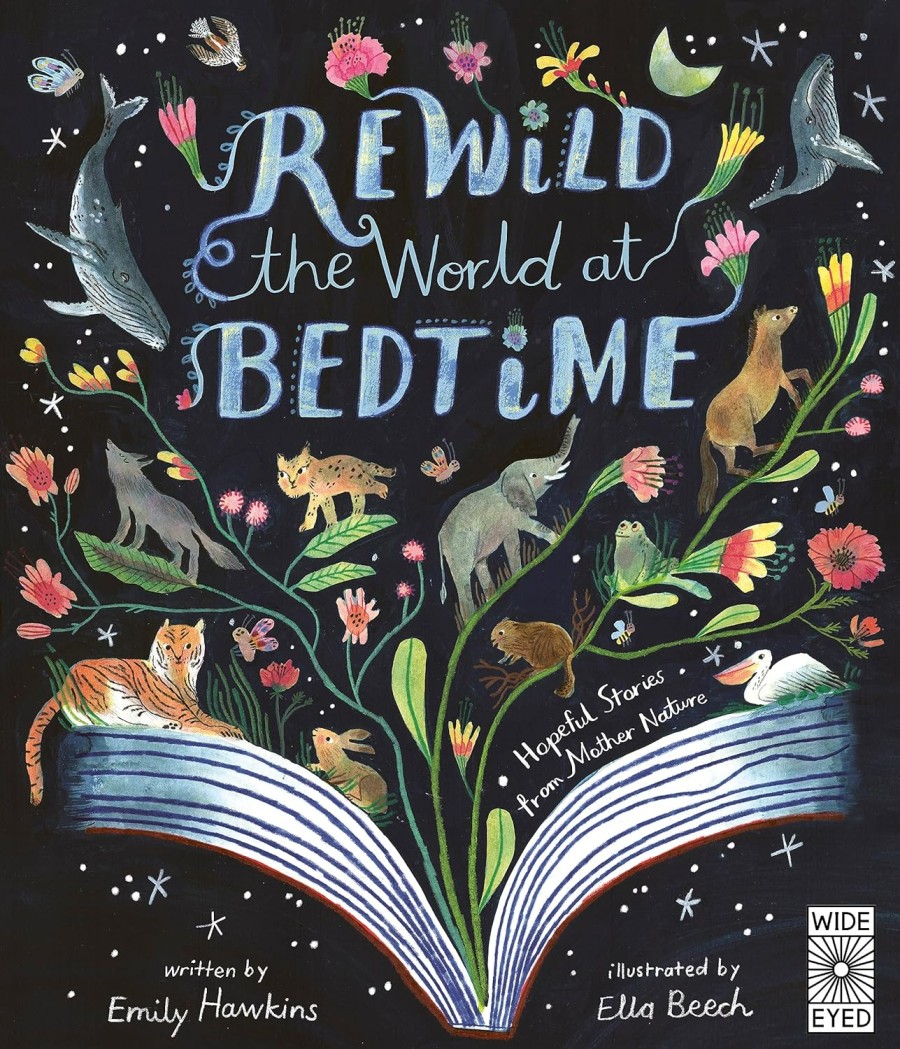
Rewild the World at Bedtime is a beautiful keepsake collection of calming wildlife stories to read at bedtime, for children to learn about projects that are rewilding the world with animals, and saving our planet.
From Colombia to Indonesia, 40,000 unique species are threatened with extinction, and it’s never been a better time to teach children of the power of conservation.
Emily Hawkins was once a children’s book editor and now writes books herself. She holds a first-class degree from Nottingham University, and lives in Winchester.
This enchanting read soothes little ones with 20 stories about nature healing itself, when animals are returned to their natural habitats, without human interference. The animals featured in the book include:
- The return of Eurasian beavers to Devon
- Saving Endangered Tigers in Nepal
- Water Buffalos Restore Ukrainian Wetlands
- Lynx Find Freedom in the Iberian Peninsula
- Majestic Humpback Whales Make a Comeback
Other Good Books on Rewilding
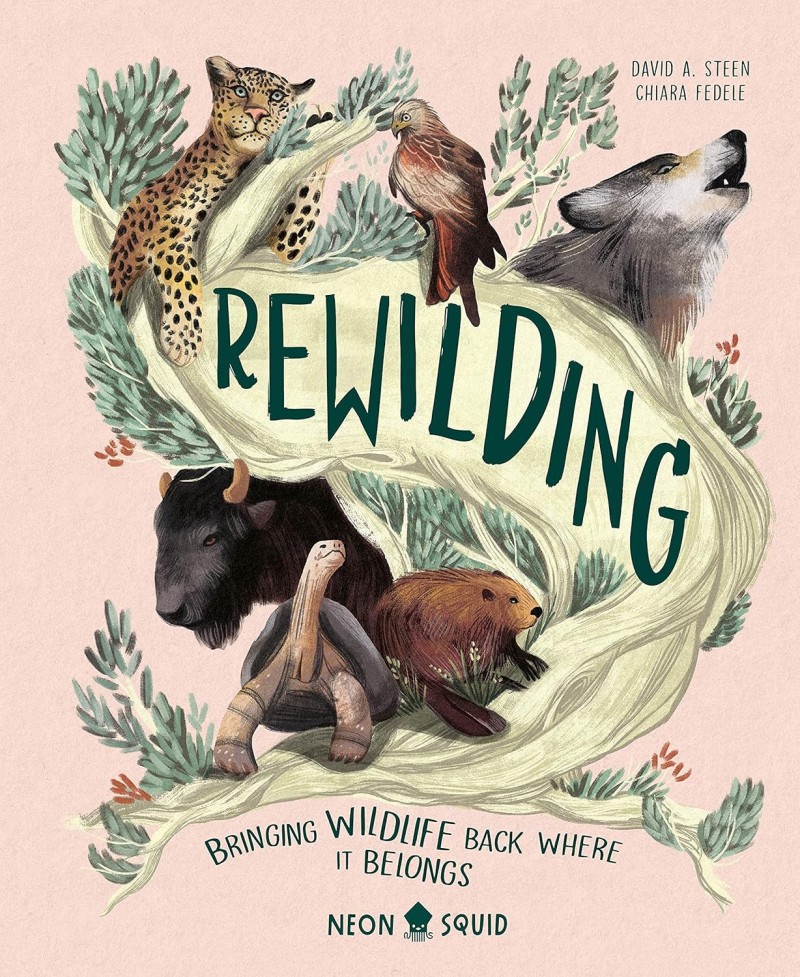
Rewilding is a beautifully illustrated introduction to rewilding, which is basically just leaving nature alone, to get on with it. Natural habitats are better than gardens for most wildlife – hedgehogs used to live in hedgerows (hence their name), and berries and hedges offer food and natural protection for birds and other wildlife.
In this book, you’ll learn about successful rewilding projects both here and abroad including:
- How beavers help to build dams, to stop flooding
- How wolves in Yellowstone National Park improved ecosystems
- How Galápagos giant tortoises survived extinction, by returning to island homes
David A Steen is a wildlife scientist and conservation biologist, who founded The Alongside Wildlife Foundation, which offers seed grants for small projects that help wildlife.
Wild Fell is a book by an ecologist on how a group of people (after the sad lonely death of a golden eagle in an unmarked spot) decided to work with farmers to rewild the remote eastern fells of the Lake District.
Wilder details the return of jaguars to an Argentinian national park, the first pangolin reintroduction project in South Africa, and ways in which giant tortoises are aiding the recovery of ecosystems throughout the Galápagos Islands.

